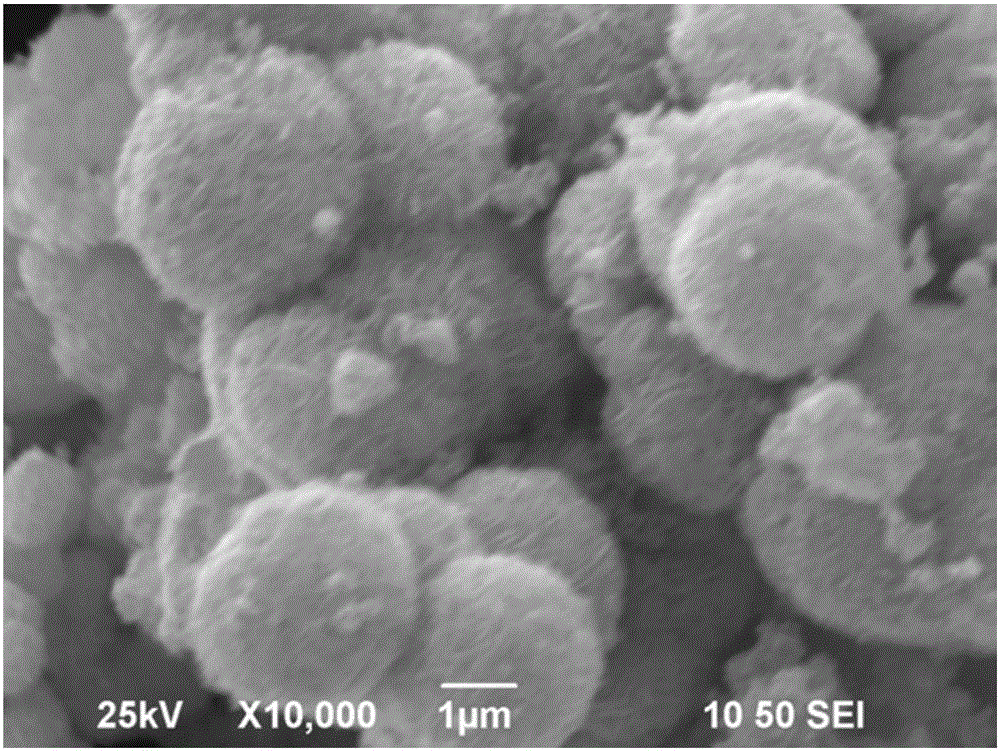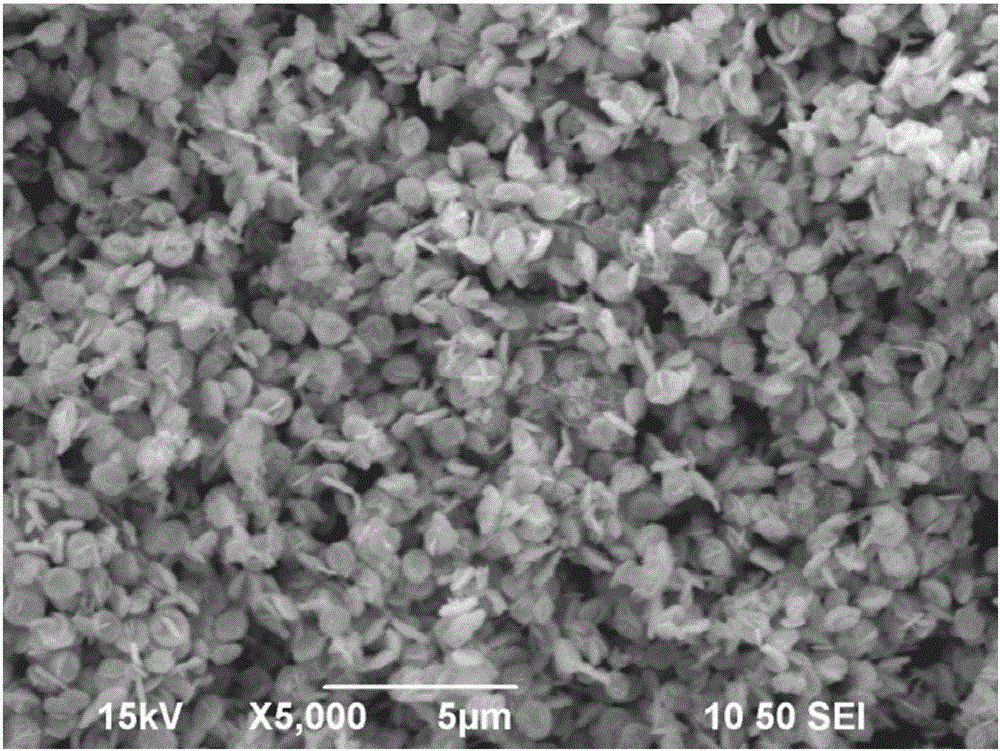Bismuth tungstate-bismuth molybdate heterojunction photocatalytic material, method for preparing same and application of bismuth tungstate-bismuth molybdate heterojunction photocatalytic material
A photocatalytic material, a technology of bismuth molybdate, which is applied in the field of photocatalytic materials, can solve the problems of difficult separation of photogenerated carriers and low visible light catalytic activity, and achieves the effects of simple process, good photoelectric performance, and favorable separation.
- Summary
- Abstract
- Description
- Claims
- Application Information
AI Technical Summary
Problems solved by technology
Method used
Image
Examples
Embodiment 1
[0047] Example 1-Synthesis of Bismuth Tungstate
[0048] 1) Weigh 2.4260g (5mmol) Bi(NO 3 ) 3 ·5H 2 O was dissolved in 40 mL of ethylene glycol to form solution A.
[0049] 2) Weigh 0.8250g (2.5mmol) Na 2 WO 4 ·2H 2 O was dissolved in 10 mL of water to form solution B.
[0050] 3) Slowly add solution B dropwise to solution A under magnetic stirring, and continue stirring for 1 hour to make it evenly mixed.
[0051] 4) Transfer the turbid liquid obtained in step 3) to a 100mL polytetrafluoroethylene lined autoclave, seal it, place it in an oven and heat it to react at a constant temperature at 160°C for 12 hours. After the reaction is over, make the reactor Naturally cool to room temperature. Centrifugal separation to collect the precipitate, washing, vacuum drying to obtain the sample Bi 2 WO 6 .
Embodiment 2
[0052] Example 2-Preparation of bismuth tungstate-bismuth molybdate heterojunction
[0053] 1) Weigh 0.4850g (1mmol) Bi(NO 3 ) 3 ·5H 2 O was dissolved in 40mL ethylene glycol to form a solution, and then the Bi prepared in Example 1 2 WO 6 0.6833g (1mmol) was dispersed in it, and stirred for 30min to mix well.
[0054] 2) Weigh 0.1210g (0.5mmol) Na 2 MoO 4 ·2H 2 O was dissolved in 10 mL of water, slowly added dropwise to the mixture obtained in step 1) under magnetic stirring, and stirring was continued for 1 hour to make it uniform.
[0055] 3) Transfer the turbid liquid obtained in step 2) to a 100 mL polytetrafluoroethylene lined autoclave. React at a constant temperature at 160°C for 12 hours. After the reaction is over, the reaction kettle is naturally cooled to room temperature. Centrifugal separation, washing, vacuum drying to obtain Bi 2 WO 6 / Bi 2 MoO 6 (50%) heterojunction, denoted as MW-0.5.
[0056] 4) Change the ratio of Mo source and W source in step 2) and step 1) to o...
Embodiment 3
[0065] Example 3: Photocatalytic degradation of metronidazole
[0066] Metronidazole (MNZ) is a commonly used nitroimidazole antibiotic in clinical practice, and it is also often used as a feed additive. It is easily soluble in water and difficult to biodegrade, and it is difficult to remove it by traditional sewage treatment methods, which has caused pollution hazards in multiple media.
[0067] A 500W xenon lamp is used as the light source, equipped with a 420nm filter to obtain visible light, that is, light with a wavelength less than 420nm cannot pass through, which can effectively avoid ultraviolet light interference. Use circulating cooling water to cool the light source so that the reaction proceeds in a constant temperature environment. Disperse 50 mg of photocatalyst uniformly in a quartz test tube containing 50 ml of 5 mg / L metronidazole aqueous solution, and place it in the dark for 2 hours to achieve adsorption-desorption equilibrium. Turn on the light source, take 4 ...
PUM
| Property | Measurement | Unit |
|---|---|---|
| particle diameter | aaaaa | aaaaa |
Abstract
Description
Claims
Application Information
 Login to View More
Login to View More - R&D
- Intellectual Property
- Life Sciences
- Materials
- Tech Scout
- Unparalleled Data Quality
- Higher Quality Content
- 60% Fewer Hallucinations
Browse by: Latest US Patents, China's latest patents, Technical Efficacy Thesaurus, Application Domain, Technology Topic, Popular Technical Reports.
© 2025 PatSnap. All rights reserved.Legal|Privacy policy|Modern Slavery Act Transparency Statement|Sitemap|About US| Contact US: help@patsnap.com



